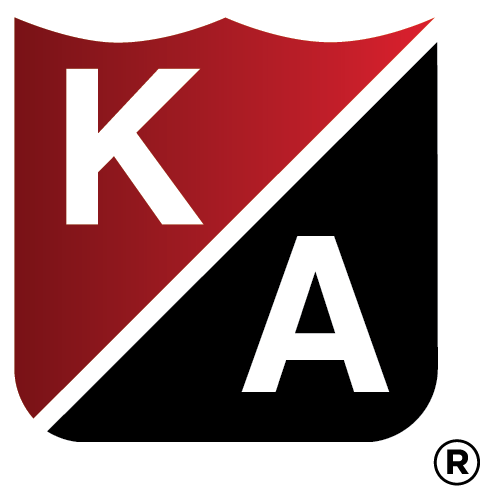Design Firms need to use written contracts on every project. It is one of the best risk mitigation tools available in the event a project has issues. It is expected that claims will rise in the upcoming months due to the impacts of COVID and the current economy. Making sure a contract is fair and reasonable to all parties is an important part of a firm’s risk management procedures. Use of industry standard documents such as the AIA or EJCDC documents are highly recommend but often clients generate their own contracts.
When standard industry documents such as AIA or EJCDC are not used or are modified, design firms are oftentimes requested to sign contracts that have onerous provisions. Below we have addressed some of the common contractual issues design firms face when using non-standard documents.
Indemnification – What is Up Front Defense?
What does this mean and how does your insurance respond?
To “defend” means to provide legal counsel and/or pay the client’s legal expenses in their
defense against a third-party claim. If you agree to defend your client, you may find that your insurance will not cover those costs.
Professional Liability policies will cover the client’s defense costs on an indemnity basis (pay back, not pay up front) when your firm is found legally liable (not just contractually liability) to the client for those damages. In other words, the negligence determination must occur before the carrier evaluates whether or not there is policy coverage for the client’s defense costs.
There are court precedent cases where the policyholder was held contractually responsible for the client’s defense costs even when there was no determination of negligence. Also, some jurisdictions do not grant the client’s defense costs as part of the court determined “damages” – which means you would not be legally liable to pay the client’s defense costs. These are two examples where the upfront defense obligation is a liability created by contract – not by common law – and therefore, the policy would not pay those expenses and your firm would be financially responsible.
The above reasons are why we feel it is important to not agree contractually to an upfront defense obligation to the client. It is potentially too great of a business risk for your firm to be expected to bear, especially when common law doesn’t require it of you.
Warranties – What do they mean and are they covered by insurance?
Can you promise that your work will be ‘perfect’?
The U.S. Common law for Standard of Care does not require perfection. By agreeing to warrant that your professional services will produce an error-free design, you may be contractually liable for claims alleging breach of warranty even though you were not negligent in providing services to the Standard of Care. Professional Liability insurance is intended to cover damages that arise out of your negligent performance. It does not cover express warranties and guarantees.
Some contracts include provisions treating professional services firms more like construction contractors. For example:
Architect / Engineer warrants and represents that it will take total responsibility for
errors and omissions on its documentation and will rectify all such instances at no
additional cost to Owner.
The design professional, pursuant to the above warranty, agrees to a higher Standard of Care than the normal negligence standard. With this language, a firm is agreeing to perfection. Yet, no one is perfect. There can be errors and omissions on virtually any project. An architect or engineer cannot warrant their services any more than a heart surgeon can guaranty that a patient will live for 20 years following heart surgery. An architectural or engineering firm can only agree to perform its services consistent with the professional skill and care ordinarily provided by firms practicing in the same or similar locality under the same or similar circumstances.
Force Majeure – What does this mean?
Schedule delays are somewhat common in the construction industry however a design professional should only be responsible for the same if it is due to their negligence in providing professional services. Project delay claims are expected to increase due to the economy. How does a design professional prevent getting pulled into a claim for delays that are not related to their negligence?
First and foremost, every contract should contain a “Force Majeure” statement indicating the design professional is not responsible for any claims for delays that are not due to their negligence in the performance of professional services and/or are beyond the control of the design professional. It is highly recommended Force Majeure events be defined to include pandemics and epidemics due to the recent COVID outbreak.
Design professionals should also avoid “Time is of the Essence” which is a commonly used phrase for the construction industry but has serious ramifications for design professionals. Time is of the Essence is considered a warranty phase and therefore is excluded from coverage under professional liability policies. If the owner/client is unwilling to remove this phrase, it is recommended that it be followed by the Standard of care provision.
Dispute Resolution- Why is it important?
Every contract should contact a dispute resolution provision. This is needed to prevent unnecessary delays in dispute resolutions as well as unnecessary expenses. The best mechanism for dispute resolutions can vary based on jurisdiction, insurance provisions, and current litigation trends. It is always recommended that there is a period of mutual negotiations between the parties. In Minnesota, and many other states, mediation has proven to be cost and time effective. A last recourse would be litigation or arbitration. Currently in Minnesota, litigation is preferred over arbitration.
Instruments of Service – Who owns them?
How does Ownership/Copyright of Documents affect your risk?
Clients are more frequently demanding that design documents be deemed their property to be reused at their will, without compensation, and without any liability protection afforded to the designer.
The problem: the designer loses the ability to control the use of its design. Where a client uses some other firm to complete the project or uses the design in another project, the original architect / engineer is at greater risk because they are not on the project and are unable to manage the inevitable design issues that could be discovered and corrected as construction work progresses. It is important to include a statement in the contract requiring the client to indemnify and hold them harmless from all costs and expenses, including the cost of defense, related to claims and causes of actions to the extent such costs and expenses arise from the client’s modification or reuse of the documents.
Additionally, where the architect / engineer gives up copyright, any design element used, even ones developed by their firm independently of the project and typically used on many of their projects, becomes the property of the client and cannot ever be used again by your firm. In such a case, contractual language should be included that requires the client to expressly acknowledge and agree that the documents and data provided by the architect / engineer under the contract may contain certain design details, features, and concepts from the architect / engineer’s own practice detail library, which collectively may form portions of the design for the project, but which separately are, and shall remain, the sole and exclusive property of the architect/ engineer. Also, a statement should be included that nothing in the contract shall be construed as a limitation on the architect / engineer’s right to re-use such component design details, features, and concepts on other projects, in other contexts, or for other clients.
Kraus-Anderson has a dedicated staff who works with the design industry and is well versed in risk management for design professionals. While we are not attorneys, we have extensive experience in how contractual risks can impact claims against design professional and how the insurance policy will respond.



